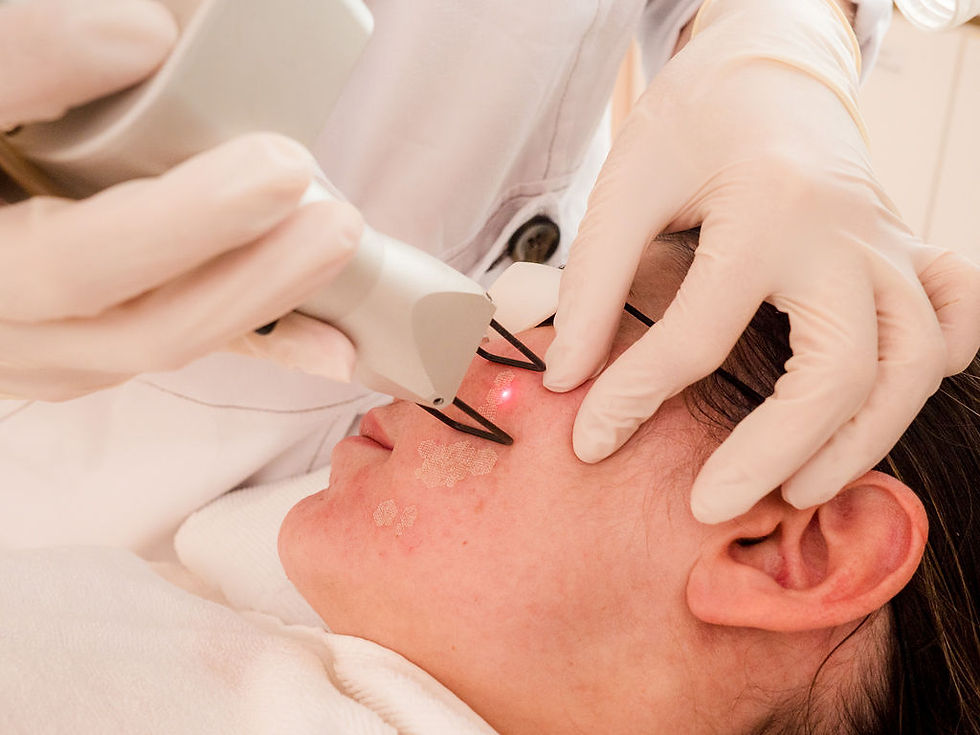PRP Treatment Costs Explained: Factors and Variables
- Royal Clinic
- Sep 16, 2024
- 4 min read
Platelet-rich plasma (PRP) therapy is a popular and innovative treatment used in various medical fields, from dermatology to orthopedics. It harnesses the body's natural healing mechanisms by using concentrated platelets from a patient’s blood to promote tissue repair and regeneration. Despite its growing popularity, the cost of PRP treatment can vary significantly depending on several factors. This article will explore these variables to help you understand what influences PRP Treatment Cost in Dubai.
Understanding PRP Treatment:
What is PRP Therapy?
PRP therapy involves drawing a small amount of blood from the patient, processing it in a centrifuge to separate the platelets from other blood components, and then injecting the concentrated platelets into the treatment area. The growth factors and proteins in the PRP are believed to enhance healing and tissue regeneration, making it a popular choice for treating conditions like hair loss, joint pain, and skin issues.
Common Applications of PRP:
Hair Restoration: PRP is used to treat androgenetic alopecia and other forms of hair loss. It is injected into the scalp to stimulate hair follicles and promote hair growth.
Orthopedic and Sports Medicine: PRP is employed to treat joint pain, tendon injuries, and ligament damage by accelerating the healing of musculoskeletal tissues.
Dermatology: In dermatology, PRP is used for facial rejuvenation, acne scars, and overall skin texture improvement.

Key Factors Influencing PRP Treatment Costs:
Location of the Clinic:
The geographical location of the clinic plays a significant role in determining the cost of PRP treatment. Clinics in major cities or affluent areas typically charge higher prices due to increased overhead costs and higher demand. For example, PRP treatments in metropolitan areas like Dubai or New York City may be more expensive than those in smaller towns or rural areas.
Experience and Qualifications of the Provider:
The expertise of the medical professional administering the PRP treatment can affect the cost. Experienced providers with specialized training in PRP therapy or those affiliated with reputable institutions may charge higher fees. The quality of care and expected outcomes often correlate with the provider’s level of expertise, which can justify the higher cost.
Type of PRP Treatment:
Different types of PRP treatments can vary in cost depending on the complexity and the area being treated. For instance, a single PRP injection for hair restoration might be less expensive than a series of injections for joint pain. Additionally, specialized PRP procedures, such as those using advanced equipment or additional techniques, may incur higher costs.
Number of Sessions Required:
PRP therapy often requires multiple sessions to achieve the desired results. The number of sessions needed depends on the condition being treated and the patient’s response to the therapy. Each session has its associated cost, and more extensive treatment plans will naturally lead to higher overall expenses. For instance, hair restoration typically involves several sessions spaced out over a few months.
Clinic Facilities and Equipment:
The cost of PRP treatment can also be influenced by the clinic’s facilities and the technology used. Clinics with state-of-the-art equipment and advanced processing techniques may charge more for their services. The quality and precision of the equipment can affect the effectiveness of the treatment, thus impacting the price.
Treatment Area:
The specific area being treated with PRP can affect the cost. For example, treating a large area or multiple areas might be more expensive than treating a smaller, localized area. In dermatology, facial PRP treatments may cost differently compared to PRP injections for the scalp or body.
Additional Costs:
There may be additional costs associated with PRP therapy that are not included in the initial quote. These can include:
Consultation Fees: Some clinics charge for initial consultations to assess the patient’s suitability for PRP therapy.
Follow-Up Visits: Post-treatment follow-up appointments may be charged separately.
Pre-Treatment Tests: In some cases, preliminary tests or imaging may be required, adding to the overall cost.
Cost Range and Typical Pricing:
Hair Restoration:
PRP treatments for hair restoration generally range from $1,500 to $3,500 per session. A typical treatment plan involves three to six sessions, which can bring the total cost to between $4,500 and $21,000, depending on the number of sessions and the clinic’s pricing structure.
Orthopedic Treatments:
For orthopedic conditions, PRP therapy can cost between $500 and $2,500 per injection. Treatment for chronic conditions or injuries may require multiple injections, leading to a total cost ranging from $1,500 to $7,500 or more.
Dermatological Applications:
PRP therapy for skin rejuvenation and acne scars usually costs between $800 and $2,000 per session. The number of sessions required will affect the total expense, with comprehensive treatment plans potentially costing between $2,400 and $8,000.
Insurance and Financing Options:
PRP therapy is often considered an elective procedure and may not be covered by health insurance. However, some clinics offer financing options or payment plans to help manage the cost. It’s essential to inquire about these options when consulting with a clinic.
Conclusion:
PRP treatment costs can vary widely based on several factors, including the clinic’s location, the provider’s expertise, the type of treatment, and the number of sessions required. Understanding these variables can help you make informed decisions and better prepare for the financial aspects of PRP therapy. Always consult with multiple providers, consider the total treatment plan, and explore financing options to find a solution that fits your needs and budget.





Comments